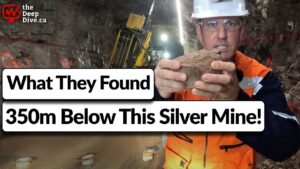HALIFAX, March 21, 2013 /CNW/ – Oceanus Resources Corporation (TSXV: OCN) (“Oceanus” or the “Company”) is pleased to announce that it has initiated the Phase I field program at its wholly-owned La Lajita gold property located in the Durango Sate of Mexico. Oceanus has assembled a team of experienced Mexican consultants and contactors to complete this work. This initial program is planned over a 6 to 9 month period.
Historical Exploration Work
The La Lajita property lies in the Sierra Madre gold belt which hosts many epithermal gold and silver mines. The property is underlain by volcanic sequences and intrusive rocks disrupted by faulting. Gold and silver mineralization is found in a number of locations along the northwest trending La Lajita and La Lajita East structures over a strike length of 2 km. Mineralization on the property consists of epithermal low-sulphidation quartz-adularia vein systems with breccias and stockwork carrying gold and silver along and adjacent to the La Lajita fault.
Small scale mining by pick and shovel is the oldest known work on the property and dates back approximately 50 years. Gold is hand panned after pulverization of the material mined from five areas on the property. The most significant mining took place at La Guadalupe where the underground workings have followed the mineralization along strike for a distance of 150 metres.
In 2004, International Northair Mines Ltd. (“Northair”) carried out geological mapping, soil and stream sediment sampling, rock sampling, underground sampling trenching and reverse circulation drilling on the property. Northair also carried out surface and underground channel sampling on the main deposits. Soil and stream sediment geochemical sampling are effective on the property and have outlined anomalies along strike to the north and south of the known deposits.
The most significant mineralization found on the property consists of five zones hosted by the La Lajita fault – from north to south; La Esperanza, El Tesoro, Santo Nino, Dos Hermanos and La Lajita Zones. Three other zones are located along a secondary fault (“La Lajita East”) that parallels the La Lajita fault, and are known as the La Guadalupe, Los Ratones and the Cerro de Sol Zones.
The El Tesoro (“F Zone”) and La Esperanza Zones are situated about 1 km along strike north of Dos Hermanos. Mineralization at La Esperanza was defined by Northair to occur for 150 m along strike and observed to vary between 5 to 15 metres in width on surface. Channel sample CSL-19 taken at La Esperanza reports 8.0m averaging 1.60 g/t Au and 49.9 g/t Ag or 2.59 g/t eqAu50*.
At Santo Nino (“E Zone”), Northair followed the mineralization for 120 m along strike and observed the zone was up to 20 metres wide at surface. Channel sample CSL-39 reported 9.0m averaging 6.18 g/t Au and 35.4 g/t Ag or 6.89 g/t eqAu50*. Channel sample CSL-14 reported 8.0m averaging 8.27 g/t Au and 64.5 g/t Ag or 9.56 g/t eqAu50*. RC drilling at Santo Nino reported 6.1m averaging 2.74 g/t Au and 19.4 g/t Ag or 3.13 g/t eqAu50 in hole TRC-04-009 while underground channel sampling returned 2.5m averaging 28.5 g/t Au and 130 g/t Ag or 31.1 g/t eqAu50*
Small scale mining at Dos Hermanos (“A Zone”) has created a number of surface and underground exposures of the mineralization over a distance of 120m along strike and up to 50 metres wide on surface. Northair surface channel samples from CSL-30 returned 13.0 m averaging 4.02 g/t Au and 44.8 g/t Ag or 4.92 g/t eqAu50* while underground channel CSL-24 returned 9.0 m averaging 23.2 g/t Au and 603.7 g/t Ag or 35.3 g/t eqAu50*. RC drilling reported 10.7m averaging 8.19 g/t Au and 46.2 g/t Ag or 9.14 g/t eqAu50* in hole TRC-04-006.
Mineralization at the La Guadalupe (“B Zone”) is defined on surface for a distance 175 metres and up to 25m wide. Northair surface channel samples CSL-3 returned 24.0 m grading 2.61 g/t Au and 14.1 g/t Ag or 2.90 g/t eqAu50; CSL-8 returned 20.0 m grading 3.80 g/t Au and 23.1 g/t Ag or 4.26 g/t eqAu50. Underground channel sample CSL-6 returned 10.0m grading 9.0 g/t Au and 67.9 g.t Ag or 10.4 g/t eqAu50*.
Northair surface channel sampling at the Los Ratones (“C Zone”) returned 14.0m averaging 5.6 g/t Au and 26.8 g/t Ag or 6.13 g/t eqAu50. A third area along the La Lajita East structure is the Cerro de Sol (“D Zone”) where surface channel samples returned 3.0m averaging 1.60 g/t Au and 16.7 g/t Ag or 1.91 g/t eqAu50*. RC drilling reported 8.4m averaging 1.81 g/t Au and 10.0 g/t Ag or 2.01 g/t eqAu50*. Surface channel sampling at the Las Zanjas (“G Zone”) returned 12.0m averaging 18.90 g/t Au and 13.2 g/t Ag or 19.12 g/t eqAu50*.
The following table summarizes the foregoing results.
| Fault Structure | Deposit Name | Sample Type | Sample Number | Length (m) | Au (g/t) | Ag (g/t) | EqAu50 (g/t) |
| La Lajita | La Esperanza | Surface Channel | CSL-19 | 8.0 | 1.60 | 49.9 | 2.59 |
| La Lajita | Santo Nino | Surface Channel | CSL-39 | 9.0 | 6.18 | 35.4 | 6.89 |
| Santo Nino | Surface Channel | CSL-14 | 8.0 | 8.27 | 64.5 | 9.56 | |
| Santo Nino | Underground Channel | 2.5 | 28.50 | 130.0 | 31.10 | ||
| Santo Nino | RC Drill Hole | TRC-04-009 | 6.1 | 2.74 | 19.4 | 3.13 | |
| La Lajita | Dos Hermanos | Surface Channel | CSL-30 | 13.0 | 4.02 | 44.8 | 4.92 |
| Dos Hermanos | Underground Channel | CSL-24 | 9.0 | 23.20 | 603.7 | 35.30 | |
| Dos Hermanos | RC Drill Hole | TRC-04-006 | 10.7 | 8.19 | 46.2 | 9.14 | |
| La Lajita East | La Guadalupe | Surface Channel | CSL-03 | 24.0 | 2.61 | 14.1 | 2.90 |
| La Guadalupe | Surface Channel | CSL-08 | 20.0 | 3.80 | 23.1 | 4.26 | |
| La Guadalupe | Underground Channel | CSL-06 | 10.0 | 9.00 | 67.9 | 10.40 | |
| La Guadalupe | RC Drill Hole | TRC-04-013 | 10.7 | 3.16 | 16.5 | 3.49 | |
| La Lajita East | Los Ratones | Surface Channel | CSL-11 | 14.0 | 5.60 | 26.8 | 6.13 |
| La Lajita East | Cerro de Sol | Surface Channel | CSL-13 | 3.0 | 1.60 | 16.7 | 1.91 |
| Cerro de Sol | RC Drill Hole | TRC-04-015 | 8.4 | 1.81 | 10.0 | 2.01 | |
| La Lajita East | Las Zanjas | Surface Channel | CSL-53 | 12.0 | 18.90 | 13.2 | 19.12 |
- EqAu50 = Ag grade/50 + Au grade
- Assay data recalculated from Northair 2004 reports and has been verified by the QP
Phase I Exploration Program
Oceanus has mobilized field crews to the property to commence the Phase 1 Exploration Program in April 2013. The initial program consists of continued geological mapping, prospecting and sampling on the Main Zones and their immediate extensions along strike. The goal of the program will be to define drilling targets on the three main deposits; Santo Nino, Dos Hermanos and La Guadalupe.
All of these targets are hosted in the upper volcanics just above the contact with the lower volcanics. Many of the operating gold and silver mines in the Sierra Madre are mining similar structures in the lower volcanics.
This press release was prepared under the supervision of Peter Webster, P.Geo. President of Mercator Geological Services Limited who is the Independent Qualified Person as defined under National Instrument 43-101. Mr. Webster has reviewed the scientific and technical information in this press release
CAUTIONARY STATEMENT:
Neither TSX Venture Exchange nor its Regulation Services Provider (as that term is defined in the policies of the TSX Venture Exchange) accepts responsibility for the adequacy or accuracy of this release.
This News Release includes certain “forward-looking statements”. All statements other than statements of historical fact, included in this release, including, without limitation, statements regarding potential mineralization and reserves, exploration results, and future plans and objectives of Oceanus, are forward-looking statements that involve various risks and uncertainties. There can be no assurance that such statements will prove to be accurate and actual results and future events could differ materially from those anticipated in such statements. Important factors that could cause actual results to differ materially from Oceanus’s expectations are exploration risks detailed herein and from time to time in the filings made by Oceanus with securities regulators.

















